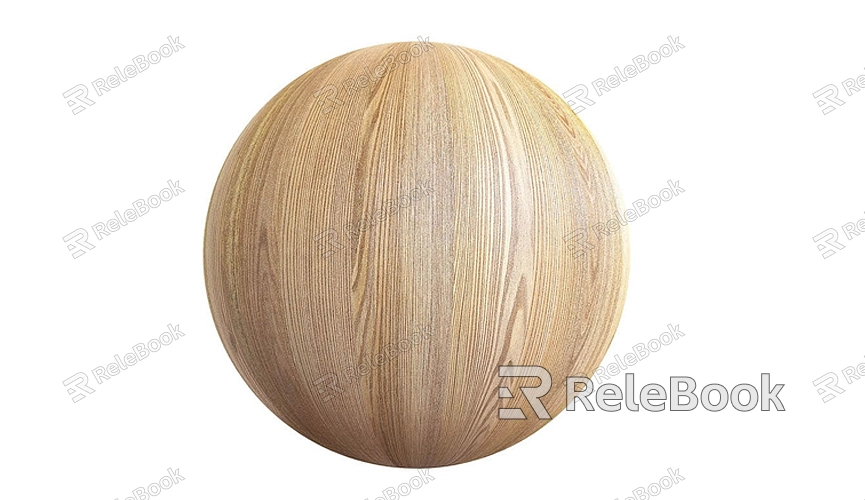What is a PBR in 3D Modeling?
In the world of 3D modeling, achieving realistic and visually appealing textures is crucial for creating lifelike models. One of the most significant advancements in this area is the introduction of Physically Based Rendering (PBR). PBR is a rendering approach that simulates the interaction of light with surfaces to produce more realistic and consistent results across different environments. This essay will explore the concept of PBR in detail, its components, and how it enhances the quality of 3D models.

Understanding PBR
Physically Based Rendering (PBR) is a method used in computer graphics to create more realistic textures and materials. Unlike traditional rendering methods, which often rely on artist-defined parameters, PBR uses physical principles to simulate how light interacts with different surfaces. This approach ensures that materials look accurate under various lighting conditions and viewing angles.
Key Components of PBR
PBR relies on several key components to achieve its realistic effects:
1. Albedo (Diffuse Color)
This is the base color of a material, representing how much light is reflected off the surface. It does not include any lighting effects or shading.
2. Metalness
This property defines whether a material is metallic or non-metallic. Metals reflect light differently than non-metals, and this parameter helps in simulating that difference accurately.
3. Roughness
This describes the surface texture's smoothness or roughness. A rough surface scatters light more, resulting in a matte appearance, while a smooth surface reflects light more directly, giving it a glossy look.
4. Normal Maps
These maps add surface detail without increasing the model's polygon count. They simulate small surface imperfections and texture details by altering how light interacts with the surface.
5. Ambient Occlusion (AO)
AO adds depth and realism to a scene by darkening areas where light is blocked or less likely to reach. This effect helps in emphasizing surface details and creating a more convincing 3D model.
6. Specular
This component controls the amount of light reflected directly off the surface. It affects the shininess and reflectivity of the material, which is crucial for accurately rendering materials like glass or water.

How PBR Enhances 3D Modeling
1. Consistency Across Lighting Conditions
One of the main advantages of PBR is its ability to maintain consistency across different lighting environments. Whether a model is viewed in bright daylight or dim indoor lighting, PBR ensures that materials behave realistically.
2. Realistic Appearance
PBR produces more lifelike textures by simulating how light interacts with surfaces. This approach results in more believable and visually appealing models, enhancing the overall quality of 3D visualizations.
3. Enhanced Interactivity
PBR materials are designed to be used in real-time applications, such as video games and virtual reality. This means that PBR models can dynamically react to lighting changes, improving the user experience in interactive environments.
4. Simplified Workflow
With PBR, artists can focus on defining physical properties rather than tweaking multiple parameters to achieve realistic results. This streamlined approach can speed up the texturing process and reduce the need for extensive trial and error.
5. Cross-Platform Compatibility
PBR materials are compatible with various rendering engines and software. This ensures that models maintain their appearance and behavior across different platforms, making it easier to work on projects that require multiple tools or engines.
Implementing PBR in 3D Projects
To implement PBR in your 3D projects, follow these steps:
1. Understand the Material Properties
Familiarize yourself with the physical properties of the materials you are working with. This knowledge will help you define accurate PBR parameters.
2. Create PBR Maps
Generate the necessary PBR maps for your models. These include albedo, metalness, roughness, normal, and ambient occlusion maps.
3. Set Up Your Shader
Use a PBR-compatible shader in your rendering engine or software. This shader will interpret the PBR maps and render your materials accordingly.
4. Test and Adjust
Render your model in different lighting conditions to ensure that the materials appear realistic. Adjust the PBR parameters as needed to achieve the desired look.
5. Optimize for Performance
While PBR enhances realism, it can also impact performance. Optimize your models and textures to ensure they run smoothly in real-time applications.
FAQ
What is the main advantage of using PBR in 3D modeling?
PBR provides a more realistic and consistent appearance across different lighting conditions, enhancing the quality of 3D models.
Do I need special software to work with PBR?
Most modern 3D modeling and rendering software support PBR. Ensure that your software or engine is PBR-compatible.
How do I create PBR maps?
PBR maps can be created using tools like Photoshop, Substance Painter, or directly in your 3D modeling software. These maps define different physical properties of the material.
Can PBR materials be used in real-time applications?
Yes, PBR materials are designed for real-time applications, making them suitable for video games, virtual reality, and interactive environments.
How does PBR differ from traditional rendering methods?
PBR relies on physical principles to simulate light interactions, while traditional methods often use artist-defined parameters. This results in more realistic and consistent materials in PBR.

